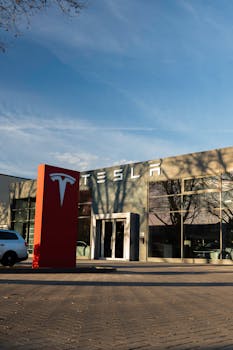
**
Introduction:
The electric vehicle (EV) revolution, spearheaded by industry giants like Tesla, is facing increasing scrutiny. A recent statement by former President Donald Trump has reignited the debate surrounding government subsidies and their impact on the viability of electric car manufacturers, particularly Tesla, under the leadership of Elon Musk. Trump's assertion that Elon Musk's company would "shut shop" without government support has sent ripples through the financial markets and sparked intense discussion about the true cost of electric vehicles and the role of government intervention in shaping the automotive landscape. This article delves into the intricacies of EV subsidies, Tesla's financial performance, and the broader implications of Trump's controversial claim.
Trump's Claim and its Impact:
During a recent interview, Donald Trump emphatically stated that Tesla, and by extension Elon Musk, are heavily reliant on government subsidies and would be unable to survive without them. This statement, while controversial, highlights a key point of contention in the EV industry: the extent to which government incentives are driving the growth of electric vehicles. The statement immediately impacted Tesla's stock price, causing a temporary dip before recovering. The market's reaction underscores the significance of government support in the minds of investors, who are constantly assessing the long-term viability of EV companies in a rapidly evolving and competitive market.
The Reality of EV Subsidies and Tax Credits:
The reality is far more nuanced than Trump's assertion suggests. While Tesla, like many other EV manufacturers, has benefited from government subsidies and tax credits, defining their reliance as solely dependent on this support is an oversimplification. These incentives, both at the state and federal levels, often take several forms:
- Tax credits for buyers: These reduce the upfront cost of purchasing an EV, making them more affordable for consumers.
- Direct grants to manufacturers: These grants can be used for research and development, infrastructure development, or expansion of manufacturing facilities.
- Incentives for battery production: Governments incentivize the domestic production of EV batteries to reduce reliance on foreign suppliers.
- State-level incentives: Many states offer additional tax credits or rebates, further reducing the cost of EVs for consumers.
These subsidies play a crucial role in driving EV adoption and stimulating innovation within the industry. However, to claim Tesla is entirely reliant on them ignores the company's significant investment in research and development, its substantial global sales, and its expanding charging infrastructure, often referred to as the Supercharger network.
Tesla's Financial Performance: A Deeper Dive:
Analyzing Tesla's financial statements reveals a complex picture. While subsidies certainly contribute to their profitability, they are far from the sole driver. Tesla’s considerable revenue stream originates from its diverse product portfolio, including the Model 3, Model Y, Model S, Model X, and its energy business, encompassing solar panels and energy storage solutions. This diversified revenue stream mitigates the risk of over-reliance on any single revenue source, including government subsidies. Furthermore, Tesla has consistently reinvested profits into research and development, further solidifying its position as a leading innovator in the EV industry.
The Broader Context: The Future of the EV Industry
Trump's comments, however inflammatory, highlight a broader discussion about the role of government intervention in shaping emerging industries. The EV industry is still relatively young, and government subsidies are viewed by many as necessary to accelerate its growth and overcome the initial barriers to entry. Critics argue that such subsidies distort the market, creating an uneven playing field and potentially shielding inefficient companies. Others contend that these incentives are crucial to fostering innovation and achieving crucial environmental goals, such as reducing carbon emissions and combating climate change. The ongoing debate will continue to shape the future of the EV industry, influencing policy decisions and technological advancements.
The Musk Factor: Leadership and Public Perception
Elon Musk's outspoken nature and sometimes controversial statements often overshadow the underlying financial realities of Tesla. His public image, while impactful, does not fully represent the complexity of the company's operations and reliance on government support. Separating the person from the company is crucial in objectively assessing Tesla's financial health and its dependence on subsidies.
Conclusion: A Nuanced Perspective
While Trump's assertion that Tesla would "shut shop" without government subsidies is a dramatic overstatement, it does highlight the significant role of government support in the EV industry's development. Tesla’s success is not solely dependent on subsidies; it benefits from a multifaceted business model, strong brand recognition, and significant investments in R&D. However, dismissing the impact of government incentives completely ignores their significant role in boosting EV adoption and market expansion. The future of Tesla and the broader EV sector will depend on a complex interplay of market forces, technological advancements, and evolving government policies. The debate surrounding subsidies will undoubtedly continue as the industry matures and navigates its next phase of growth. This warrants further investigation into the specifics of subsidies across different regions and the long-term sustainability of the EV market, ensuring a balanced and nuanced approach to understanding this rapidly changing industry.




















